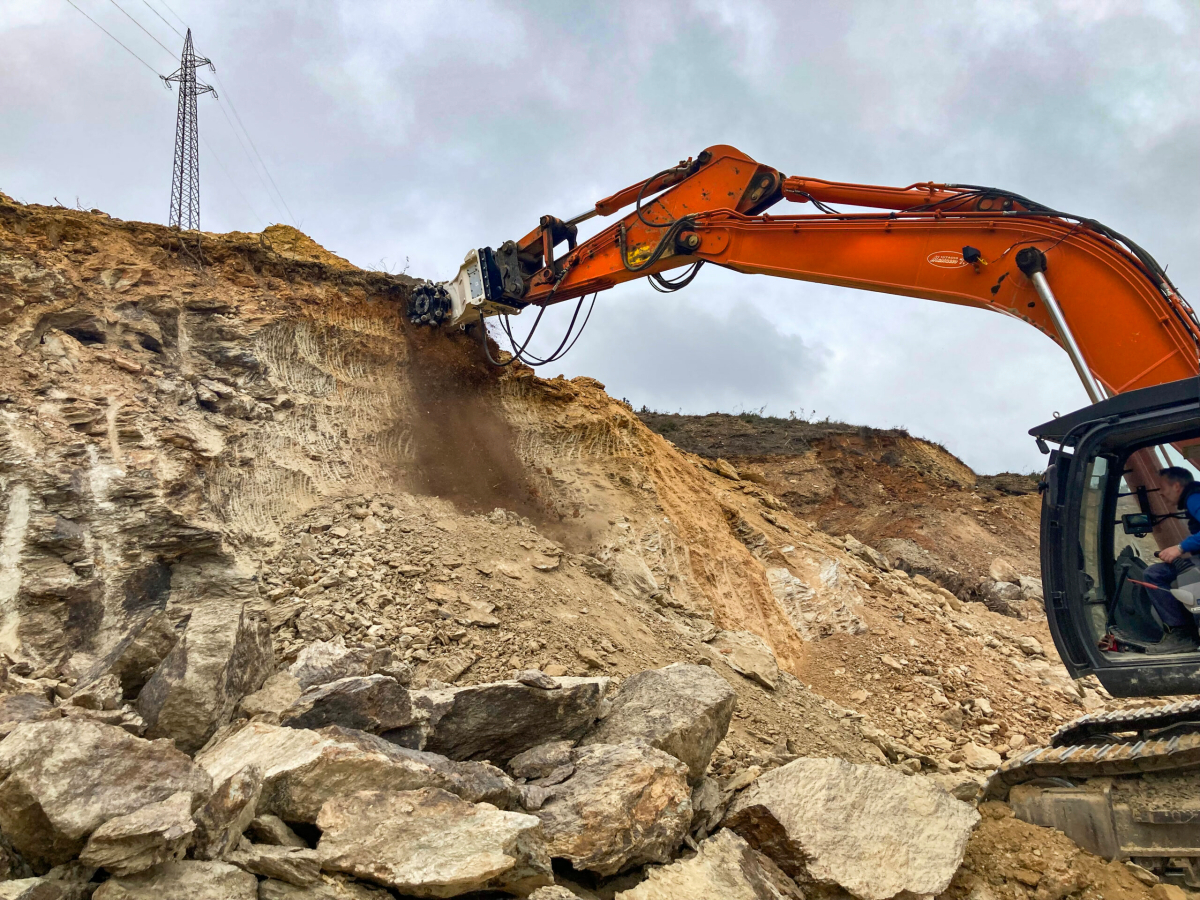Simex TF Drum Cutters for rock wall profiling and quarrying
11.04.2024The low vibrations and seamless milling make the Simex TF drum cutter particularly suitable for quarrying. On the one hand, the drum cutter guarantees the selective breaking of the rock mass ensuring the stability of the wall; on the other, it increases profitability, producing a crushed material that often does not even require further volume reduction by additional equipment or operating machine.
 Simex drum cutter TF 2100
Simex drum cutter TF 2100
© Simex
In quarrying works, the TF drumcutter showcases its full versatility: on the one hand, it guarantees selective breaking of the rock mass ensuring the stability of the wall in applications such as open pit extraction; on the other hand, it increases profitability, producing a crushed material that often does not even require further volume reduction by additional equipment or operating machine.
Applications
The TF double drumcutters have two main fields of application: STANDARD, where the cutter head operates in applications with infrastructural or demolition purposes. Or HEAVY, when working in contexts such as quarries, mines or tunnels. However, the great flexibility of Simex TF drum cutters means they can be used in many various fields and niche applications.
Double drum cutter heads
The Simex TF double drum cutter heads are ideal for trenching, profiling rock and cement walls, tunneling, quarrying, demolition, dredging, finishing operations and underwater works. TF drum cutters are highly effective where conventional excavation systems are too weak and percussion systems have little effect.
TF drumcutter's quiet operation and low vibration emission (< 87 dB), allows them to be put to work near sensitive areas (residential zones, hospitals, schools, bridges and infrastructure). Especially recommended for finishing operations, where high precision, minimum disturbance and optimum aesthetic results are required.
 Simex calculator
Simex calculator
© Simex
Calculate your hourly production
The Simex calculator tool will help operators to calculate the theoretical hourly production by choosing the most suitable TF cutter head model, according to the material they need to work with and the excavator they have.
